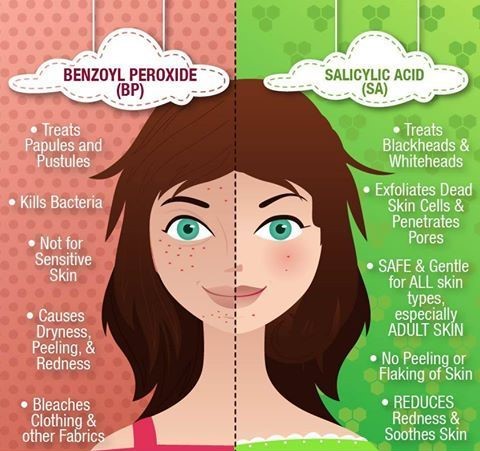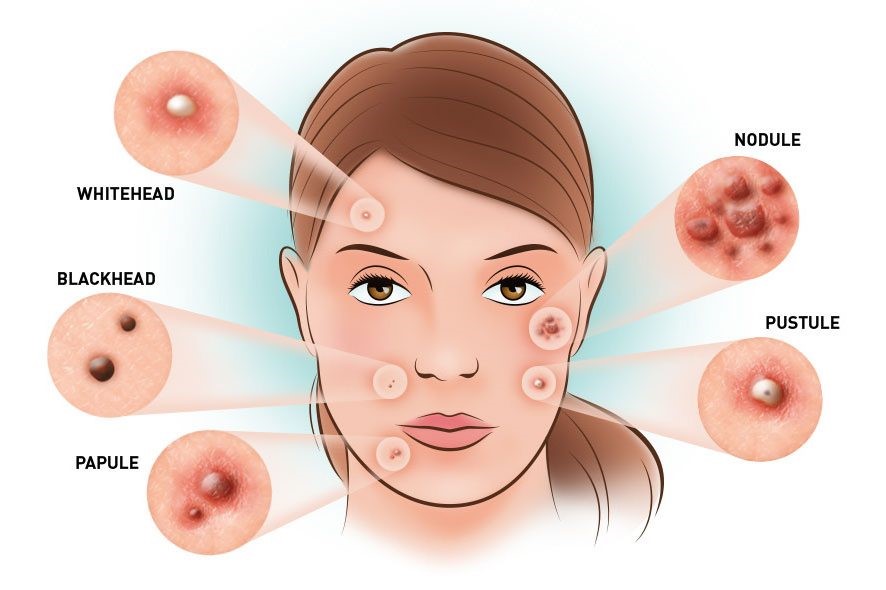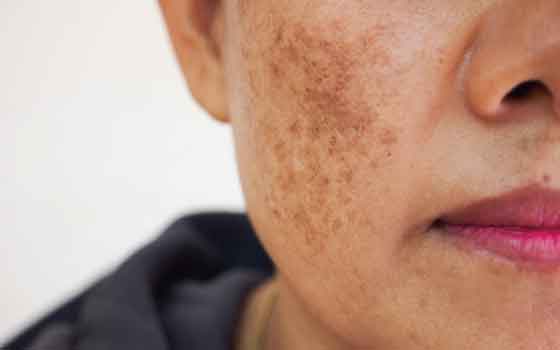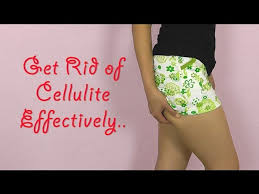Salicylic acid and benzoyl peroxide are two of the most popular ingredients used for fighting acne. These ingredients are usually found in various cosmetic products these days, such as chemical peels, creams, lotions, etc. They are readily available over the counter and can help treat mild acne and also prevent future breakouts as well. Both these products work in their own ways to improve your skin. We take a look at the pros and cons of both salicylic acid vs. benzoyl peroxide and also which works better for acne.
Salicylic Acid or Benzoyl Peroxide:
“Salicylic acid” is a type of beta-hydroxy acid (BHA) that is used in the treatment of acne. It helps exfoliate the skin and also dislodges dead skin cells that clog your pores. This ingredient is easily available over the counter and is available in 0.5% to 2% concentrations.
The cells present in the lining of the hair follicles in people who have acne have a tendency to rapidly multiply and stick to one another. Salicylic acid functions by dissolving this cement, holding the sticky cells together in the clogged skin pores.
Salicylic acid also soothes the skin. The anti-inflammatory properties of salicylic acid help in providing a soothing and calming effect on your skin.
Benzoyl Peroxide
It is another non-prescription drug that also helps destroy any acne-causing bacteria in the pores of your skin. It is also referred to as BPO, and it primarily functions as an exfoliating agent as it increases the turnover of new skin and also removes the mixture of dead skin cells and sebum from the pores.The product can be used by people having moderate to severe acne.
Benzoyl peroxide is effective against all types of acne lesions, including whiteheads, blackheads, and even big red pimples. The ingredient is bactericidal, meaning that it kills all bacteria present on the skin, instead of just slowing down their growth. Benzoyl peroxide also works very quickly, bringing about an improvement in acne within only five days of starting the treatment.
Benefits of Each Ingredient
Both of these ingredients help in the removal of dead skin cells, which clog pores and are a leading cause of acne breakouts.
Salicylic Acid
It is best for treating whiteheads and blackheads. When used regularly, salicylic acid can also help prevent future comedones from developing. Here are the benefits of this ingredient:
- Exfoliates the skin and also removes dead skin cells
- Derived from willow bark and soothes skin and inflammation
- It helps decrease pore size
Benzoyl Peroxide
Benzoyl peroxide is the most effective when used to treat the traditional red, pus-filled pimples or pustules.
Additionally, it also removes excess dead skin cells and oil. It also kills acne-causing bacteria present beneath your skin.
To sum up the benefits of benzoyl peroxide:
- It helps kill bacteria
- Works as quickly as five days
- Also prevents antibiotic resistance
Side Effects of Both Ingredients
The side effects of each ingredient vary, but overall, both the products are considered to be generally safe. They are even considered to be safe to use during pregnancy. However, salicylic acid should not be used by people who are allergic to aspirin.
Both ingredients are known to cause irritation and dryness when you start using them for the first time. It is rare to have an allergic reaction to either of these ingredients, but it is possible. If you develop extreme swelling or experience trouble breathing, then you must seek immediate medical assistance.
Salicylic Acid
Some of the other side effects of salicylic acid include:
- Itching
- Hives
- Peeling skin
- Tingling or stinging
- It takes up to four to six weeks to see any results
Excessive use of salicylic acid can lead to side effects, but most over the counter products do not have enough concentration to cause any adverse reactions
Salicylic acid works by drying out excess oils (sebum) in your pores. However, in some cases, it can strip your skin off too much oil, causing unusual dryness.
Benzoyl Peroxide
Some of the side effects of benzoyl peroxide include:
- It can bleach fabric if you are not careful
- That causes dryness, peeling, and redness
- In some cases, benzoyl peroxide can lead to post0inflammatory hyperpigmentation or dark spots
- If you have sensitive skin, then benzoyl peroxide may not be safe for you as it is more drying than salicylic acid, and it can lead to more severe irritation of the skin.
If you suffer from any of the following conditions, then you should discuss the use of benzoyl peroxide with your doctor before using it:
- Seborrheic dermatitis
- Psoriasis
- Eczema
Benzoyl peroxide can also stain your hair and clothes, bleaching them both. This is why it should be applied with caution, and after using, wash your hair and hands thoroughly.
Salicylic Acid vs. Benzoyl Peroxide: How to Use These Ingredients?
It is not advisable to use salicylic acid or benzoyl peroxide at each step of your skincare routine. This means that if you are using a salicylic acid-based cleanser, then you need to ensure that the ingredient is not included in your moisturizer or toner.
If you use salicylic acid or benzoyl peroxide in every step of your skincare routine, then it can dry out your skin and worsen your acne.
While using these products, it is also essential that you wear sunscreen every day. Even though these anti-acne ingredients do not increase sun sensitivity, such as alpha-hydroxy acids and retinoids, but going out unprotected into the sun after using these ingredients can worsen your acne. It is also going to increase the risk of scarring and skin cancer.
Salicylic Acid
Salicylic acid is available over the counter in concentrations between 0.5 and 5 percent. The ingredient is available in the form of washes, creams, astringents, and many other products.
Salicylic acid should be used once in the morning and once at night. Since the ingredient is so gentle, you may need to apply it again as a midday spot treatment.
Benzoyl Peroxide
If you are starting benzoyl peroxide treatment for the first time, then you should ideally begin with a 2.5 percent concentration. This will cause less irritation and crying. You can gradually then move to a 5 percent concentration, but only if you notice any results after using the lowest concentration for six weeks. You can also start with a gentle cleanser and then move to a gel-based form of the ingredient, once your skin starts getting used to the ingredient.
If you do not observe any results even after six weeks, then you should think about using a 10 percent concentration.
Benzoyl peroxide can be used two times a day. Apply the product only after cleansing and toning your skin. You should apply it in a thin layer on the entire affected part of your skin. After applying, let it dry out for a few seconds before you put your moisturizer.
If you are using benzoyl peroxide for the first time, then begin by using it only once a day. You can then gradually work your way up to doing morning and night applications.
Remember that if you are already using a retinol or retinoid product at night, then only apply benzoyl peroxide only once in the mornings. This will prevent any side effects such as irritation and dryness of the skin.
Can You Use Both Ingredients At The Same Time?
If you are undergoing acne treatment from a dermatologist, then it is quite possible that your treatment plan includes both salicylic acid as well as benzoyl peroxide together. However, this is very rare that they prescribe together. This is because applying both the products on the same part of the skin, even if you use it at different times of the day, can increase the risk of developing excessive dry skin, peeling, and redness.
A safer approach to using these ingredients is to use both ingredients for different types of acne. For example, you should use salicylic acid for an all-over technique for treating and preventing acne breakouts. Benzoyl peroxide is better to use as a spot treatment instead of an all-over treatment.
How To Choose Which Is The Right One For You?
Between salicylic acid and benzoyl peroxide, it can be difficult for you to decide which one to pick. The product you select should depend on certain factors. These include:
- The Kind Of Acne You Have: The most important to consider while deciding between salicylic acid and benzoyl peroxide is the type of acne you have. Benzoyl peroxide is ideal for treating mild pustules, while salicylic acid is useful for treating blackheads and whiteheads.
- The Severity Of The Acne Breakouts: Both of these products can treat mild acne breakouts. It can take several weeks for the product to take effect fully. Benzoyl peroxide, though, acts faster and shows quick benefit when used as an emergency spot treatment.
- Your Activity Level: If you are more active during the day and more likely to sweat at that time, then keep in mind that the sweat can transfer benzoyl peroxide to your clothes and hair, and stain them. This is why using benzoyl peroxide uses at night. You can opt for using salicylic acid in the day instead.
- Overall Skin Condition And Health: Salicylic acid is a milder product and does not aggravate sensitive skin. Benzoyl peroxide, on the other hand, can cause irritation to sensitive skin.
- Underlying Medical Conditions: Even though both products are available over the counter, this still does not mean that they are safe to be used by everyone. You should always double-check with your doctor before you start using these ingredients, especially if you have any underlying kin condition. You also need to discuss the usage of these ingredients with your doctor if you have diabetes, liver disease, or kidney disease.
Products to Try
- Here are certain products you can think of trying if you want to opt for using salicylic acid:
- Neutrogena Oil-Free Acne Wash Pink Grapefruit Foaming Scrub: This is a maximum-strength face wash that is gentle enough to use daily. It also helps prevent future acne breakouts if used regularly.
- Murad Time Release Acne Cleanser: This is a gentle facial cleanser that has a 0.5 percent concentration of salicylic acid. It also helps reduce the appearance of fine lines and wrinkles.
- Philosophy Clear Days Ahead Moisturizer: This product also contains an additional ingredient oligopeptide-10 that helps prevent the skin from drying. So apart from salicylic acid, the added ingredient boosts the effectiveness of this moisturizer.
- Clean and Clear Deep Cleansing Toner for Sensitive Skin: This toner is a top-rated product owing to its non-drying formula. It is suitable for sensitive skin, and it is also easy to apply with a cotton pad/ball.
- Juice Beauty Blemish Be Gone: This product with salicylic acid is ideal for an occasional breakout of acne.
Best Products:
Here are some of the best products to try if you want to use benzoyl peroxide for treating acne:
- Paula’s Choice CLEAR Regular Strength Skin Clearing Treatment: This product eliminates common, yet dangerous, ingredients you tend to find in other acne treatments such as menthol, alcohol, and camphor. This is why this product guarantees zero irritation. It is suitable for all skin types and can be applied up to two to three times a day to get the best results.
- Mountain Falls Daily Acne Control Cleanser: This cleanser contains 1 percent benzoyl peroxide and is best for sensitive skin. It is useful in preventing acne if used regularly.
- Neutrogena Clear Pore Facial Cleanser/Mask: This is a two-in-one product containing benzoyl peroxide. It can either be used as a daily cleanser, or it can be left on for a longer time if you wish to use it as a face mask.
- Acne.org 2.5% Benzoyl peroxide: This product is available in gel form, and it works by penetrating your skin effectively. It also prevents your skin from drying out, while also clearing up mild acne.
- Clean and Clear Persa-Gel 10: This product is a prescription-strength spot treatment of benzoyl peroxide. It is available in 10 percent concentration of benzoyl peroxide.




